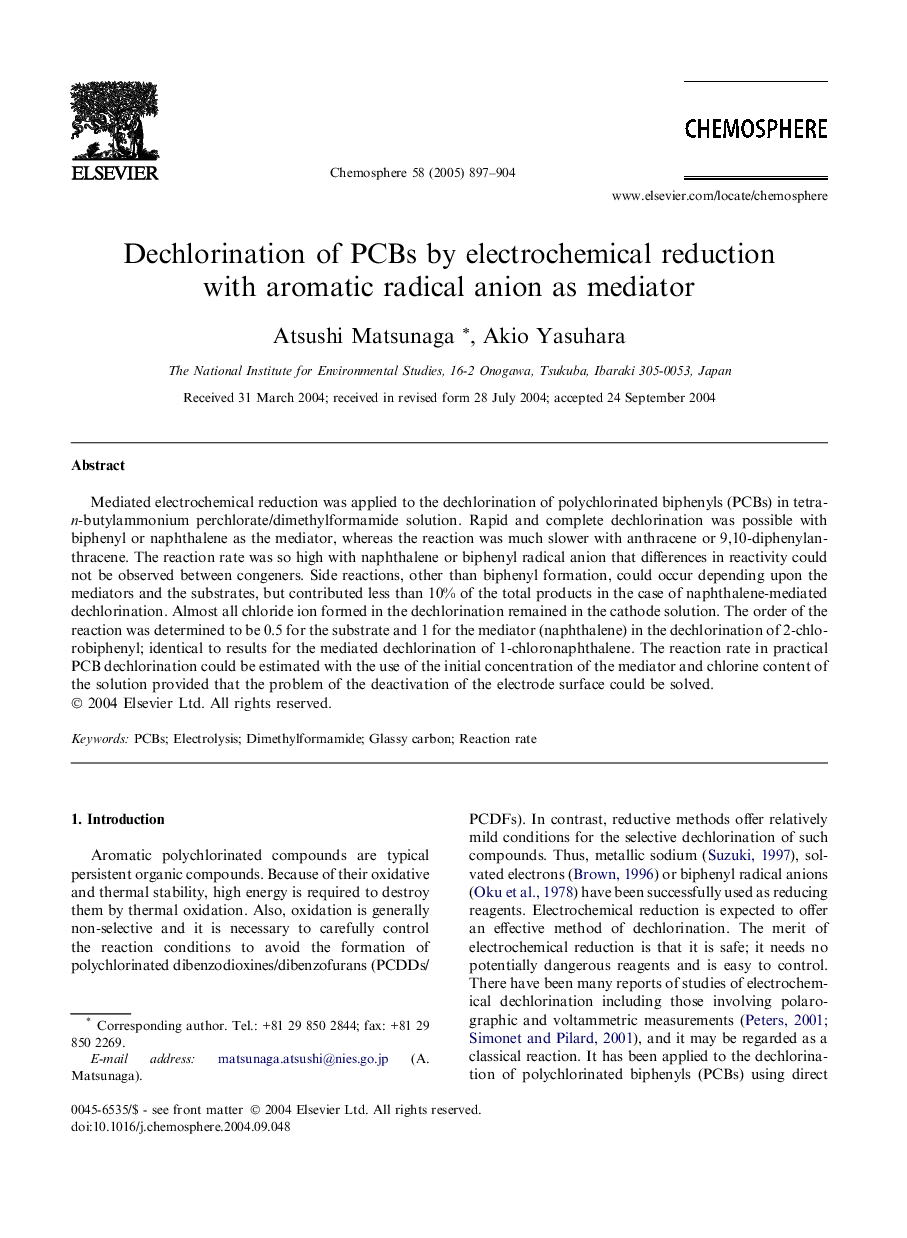| Article ID | Journal | Published Year | Pages | File Type |
|---|---|---|---|---|
| 9451856 | Chemosphere | 2005 | 8 Pages |
Abstract
Mediated electrochemical reduction was applied to the dechlorination of polychlorinated biphenyls (PCBs) in tetra-n-butylammonium perchlorate/dimethylformamide solution. Rapid and complete dechlorination was possible with biphenyl or naphthalene as the mediator, whereas the reaction was much slower with anthracene or 9,10-diphenylanthracene. The reaction rate was so high with naphthalene or biphenyl radical anion that differences in reactivity could not be observed between congeners. Side reactions, other than biphenyl formation, could occur depending upon the mediators and the substrates, but contributed less than 10% of the total products in the case of naphthalene-mediated dechlorination. Almost all chloride ion formed in the dechlorination remained in the cathode solution. The order of the reaction was determined to be 0.5 for the substrate and 1 for the mediator (naphthalene) in the dechlorination of 2-chlorobiphenyl; identical to results for the mediated dechlorination of 1-chloronaphthalene. The reaction rate in practical PCB dechlorination could be estimated with the use of the initial concentration of the mediator and chlorine content of the solution provided that the problem of the deactivation of the electrode surface could be solved.
Related Topics
Life Sciences
Environmental Science
Environmental Chemistry
Authors
Atsushi Matsunaga, Akio Yasuhara,
